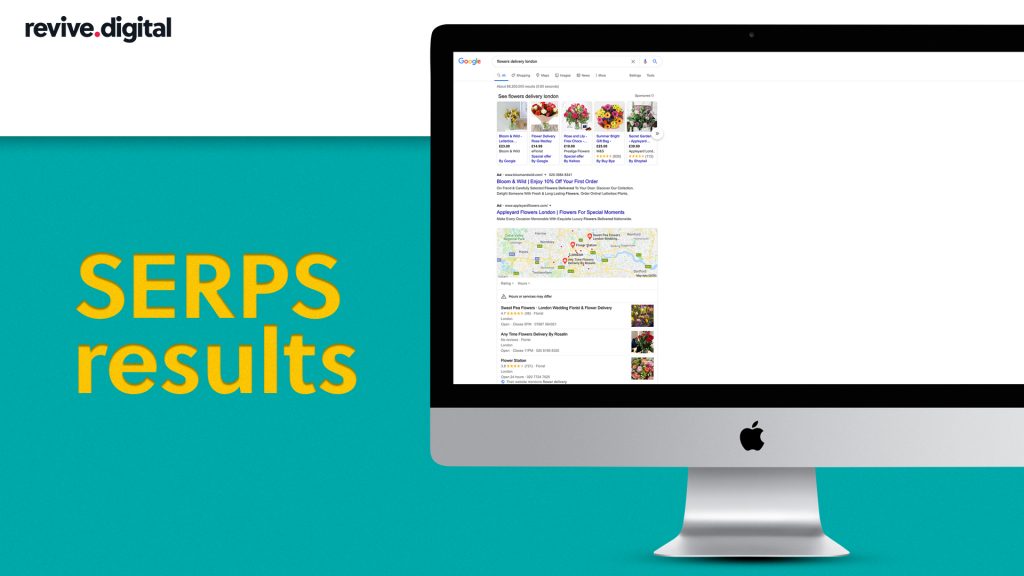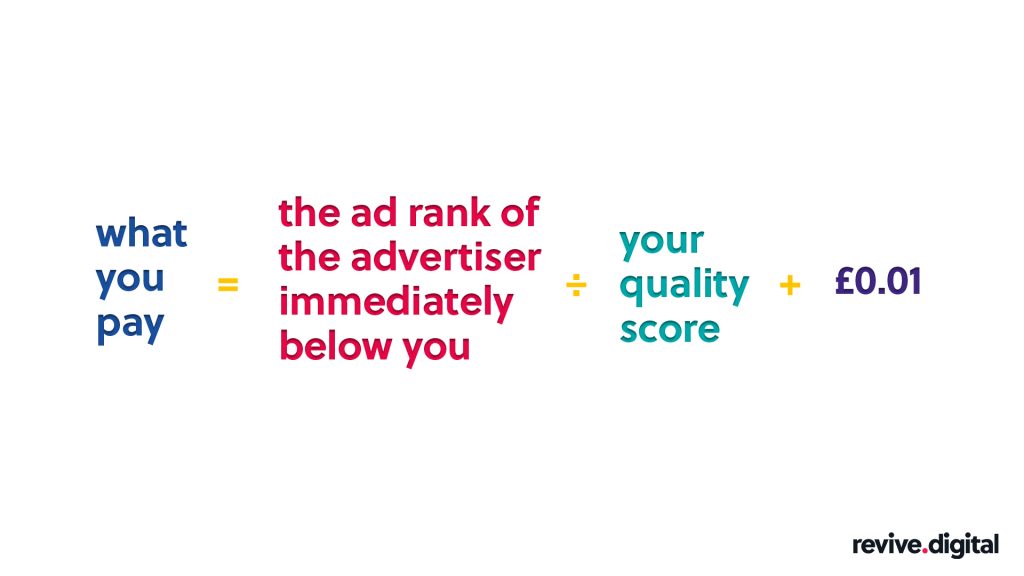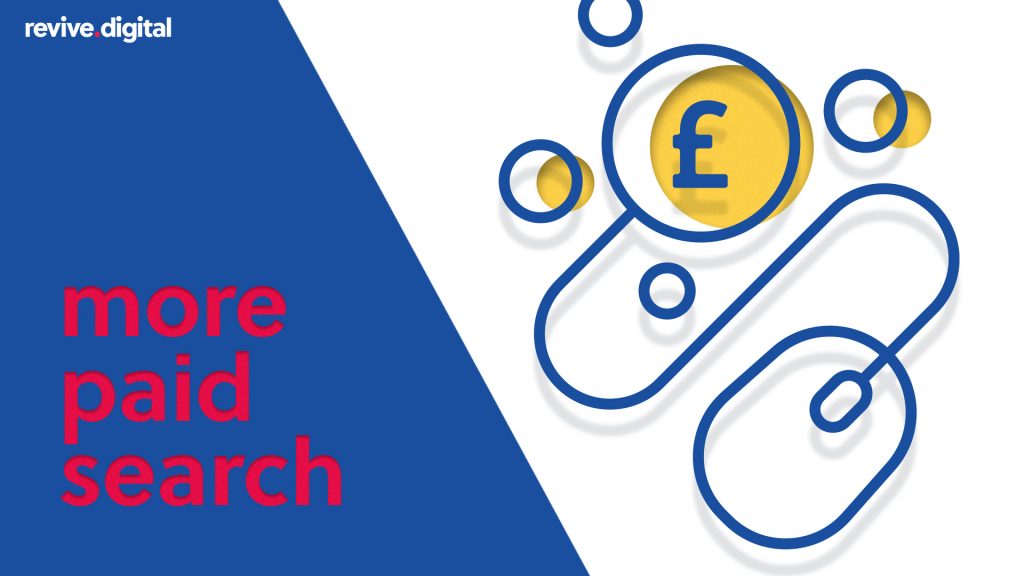24/06/2020
For some it’s still considered one of digital marketing’s more mystical elements. But Paid Search is really just the paid-for advertising found on search engines, and it’s part of the format known as Pay-Per-Click, or PPC.
Perhaps you already know you should invest in search engine advertising and that paid search is an important part of the mix. But the thoughts of cost, difficulty and time stop you getting involved.
However, when you look at the basics, the concept of Paid Search is actually quite straightforward:
When someone searches online for a product or service the related adverts go into an online auction. What you, as the advertiser, is bidding on is the keyword or phrase related to your advert. For example, if you run a florist in Essex you might be bidding on the words ‘Essex Florists’. The aim is to get your advert shown in a prominent position on the search engine.
The position of your advert ranking takes into account a combination of factors, not just who has placed the highest monetary bid. But the top spots are really the aim. You’re more visible and will get more clicks.
Pay-per-click is the model where you pay a fee each time a customer clicks your online advert. Search engine advertising is one of the most popular forms of PPC and below we’ll look into more detail about what goes into ad ranking. We’ll also use Google as the example, as it has the largest market share, but the concepts are similar for Bing ads and Yahoo ads too.

What is Paid Search?
When you enter a search term into a search engine and hit the ‘enter’ button, you get a page of results. These results are called Search Engine Results Pages, or SERPs.
Some of the SERPs will be organic, that is those gained naturally because a site’s content delivers just what the user is looking for. Other results, that usually appear at the top, on one side or the bottom, are ‘sponsored’ or ‘ad’ results.
These are the paid for ads deemed relevant to your search. If you click on one, the advertiser (in this case Google) gets paid an amount by the business who has placed the ad. It’s pay-per-click.
As a business it makes sense that if you pay for the click anyway you want the person who has clicked to become a customer so you can recoup the cost and make some profit too.
The law of search engines is that the higher you rank, either paid or organically, the more clicks you get. So whether it’s organic or paid you want to be aiming for those top spots.
And of course all that is in the context of the environment where other people are bidding on the same keywords as you. It’s highly competitive.
If you’re that florist from earlier, you can bet that other Essex Florists will be bidding on those keywords too.
How Paid Search with Google Ads Works
On Google sponsored adverts – once called Google Adwords, now Google Ads – are placed in an auction with business bidding on the positions on SERPs results. But you can’t simply have the biggest budget and pay for that top three ranking. Your placement comes from a combination of factors, including budget, landing page and how well written your ad is.
Let’s first look at some basic factors.
Keywords
You set up the keywords in your PPC campaign – that is the phrases and words related to your business that you want to trigger your ad. If you offer email marketing as a service so your keywords might include ’email marketing’, ‘marketing emails’, and ’email campaigns’.
When a user enters one of these into the search engine the auction is started and Google determines the placement of an ad by looking at different factors including your Quality Score and your budget. How much you pay also depends on the keywords you choose. Some keywords are far more competitive than others, and the cost for bidding on them reflects that.
Using those keywords in your ad text and landing page is vital too. It helps create relevancy which improves the quality of your ad – a crucial factor which we’ll get to below. At its simplest if a person wants brand XYZ of jeans and the ad talks about the brand XYZ but goes to a generic trousers landing page your ad’s rank will reflect the poor user experience.
Again, as you pay for those clicks regardless of the final outcome, you want to make sure those keywords target the people who will buy your products or use your services. Keyword tools are great to help you find relevant keywords and phrases related to their business area.
Paid Search and Keyword Match
In your campaigns you can further refine your keywords with tools like ‘exact match’, ‘broad match’ or ‘phrase match’. You should also include negative keywords – that is words that might trigger an ad, but aren’t related to your business.
For example if you sell high end furniture you wouldn’t want to trigger ads for ‘cheap’ furniture. Or if a person enters the words ‘golf clubs’ into Google and you are a sports retailer you wouldn’t want to trigger ads where a person is looking to join the local golf club.
PPC success comes in blending all these elements carefully and seeing what works and what doesn’t. Monitor your keywords and adjust your bids accordingly, building on the ones that do well, and reducing spend on those that don’t.
Ad Rank – Better Ads mean Better Rankings
Google uses Ad Rank as part of its process to determine where your Google Ads sits. Ad Rank consists of these main elements. Your Ad Rank determines your position and even if your ad is eligible at all to be shown.
Source: Google
Quality Score
You’ll hear marketers and PPC practitioners talking about Quality Score like it’s a big deal. Well, it kinda is in terms of how much your campaigns will cost.
And as you’ll see a high Quality Score with a lower bid can rank higher than a lower quality score with a higher bid amount.
This is how Google defines Quality Score:
Quality Score is an estimate of the quality of your ads, keywords and landing pages. Higher quality ads can lead to lower prices and better ad positions.
And this is how it all fits together:
You set the maximum amount you’re prepared to pay for a search engine user to click on your ad, which can be automated or manual.
There are three options for how you will plan the budget for your campaigns:
You can set a budget to run automatically, or manually adjust how much you want to pay.
Your ad gets triggered by the search of a keyword and goes into the auction where it will compete for position with competitors bidding on the same keywords. (Note too that competitors can and will bid on your brand name too to try to rank higher than you.)
Google calculates your Ad Rank which determines your ad position or even if your ads are eligible to show at all.
Your advert is placed.
And when a user clicks what you pay is determined by this formula…

… the ad rank of the advertiser immediately below you ÷ your quality score + £0.01 = what you pay.
So for example, you set daily budgets of £50 and each click costs you 50p. You could get 100 clicks before your budget runs out. And hopefully of those 100 clicks, around ten or twelve are conversions.
That’s really the basics of PPC marketing and Paid Search. But it’s also easy to burn through your budget if you are unsure of how to optimise your ads, budget and landing pages. The most expensive thing you can have is ads that get clicked but don’t convert into sales.

Improve, Improve, Improve
19th Century Retail magnate John Wannamaker’s is reckoned to have said: ‘half the money I spend on advertising is wasted; the trouble is, I don’t know which half’.
The great thing about paid search is that you can see exactly what works and what doesn’t. Larger businesses even experiment with words and phrases in real-time. This ability to measure, and the speed with which you can get data, is one of the big advantages of digital marketing in general.
So keep refining, improving and monitoring. This is time consuming but constantly testing brings good results and cheaper costs.
(Notice we use the word campaigns here – to make Paid Search and PPC work you’ll be bidding on possibly hundreds of keywords and phrases broken down into ad groups).
Google lets you target your audience to improve click-through rates and optimise your budget. You can upload a list of existing customers so the ads aren’t shown to people that have already bought from you and you can find new customers by tracking the behaviour of people who are ready to buy your product or service.
It’s the smaller but frequent improvements, changes and updates that have the biggest long-term impact on your Paid Search strategy.
Other Types of PPC Advertising
So far we’ve looked at Paid Search on Google. All the major search engines run their own equivalent, each with its own best practises and algorithms to determine ad placement and they’re generally similar. But text-based search engine adverts aren’t the only forms of PPC to think about.
Display Ads
These are the image ads that look more like traditional print ads, that you’ll see on other people’s websites. They can be set up through ad networks such as Google Display Network.
Social Media
You can pay to advertise on social media platforms, perhaps in a social feed or other part of their profile. You really need to be paying to deliver ads to look-a-like audiences, that is those who look like your target lists, or retargeting people based on their website visit behaviour.
Paid social ads offer a great variety of media too, for example you can use images or videos and nail the perfect format to which your audience responds.
Social includes the obvious sites like Facebook and Twitter. But don’t forget about LinkedIn and YouTube too. Each site has its own challenges and ways of doing it right.
Remarketing
People claim to have a love-hate relationship with remarketing ads. You visit a site to browse and then you’re chased around the internet on every site that delivers external ads. It’s like many things in digital… people do it because it works. The stats back it up.
And if you really are thinking about buying that product the ads usually won’t offend you. You can set any action to trigger a remarketing ad – a website visit, a form completion or reading a piece of web content.
Google Shopping
If you’re an ecommerce business Google Shopping is one you just can’t ignore. When you want to buy a product you search for it and part of the SERPs show a carousel of products at the top. That’s Google Shopping. The product and it’s price, often including any discounts, are shown too.
By clicking, a user is shown a list of websites that sell the product, and the price, usually including delivery. As you can imagine, it’s highly competitive and it’s not unknown for marketers to develop separate strategies for Google Shopping ads.
Final Thoughts
Online advertising using marketing like Google Ads is a financial investment in your business and a time investment too. But for most businesses, especially smaller ones, time and money are the two most valuable and most wanted commodities.
You’ll need to monitor your campaigns, ads and keywords weekly and make small but important adjustments to increase your chances of success. And by success we mean getting a customer or other chosen action at a cost that is acceptable to your business.
But it’s also worth considering that if you’re not doing it your competitors probably are.